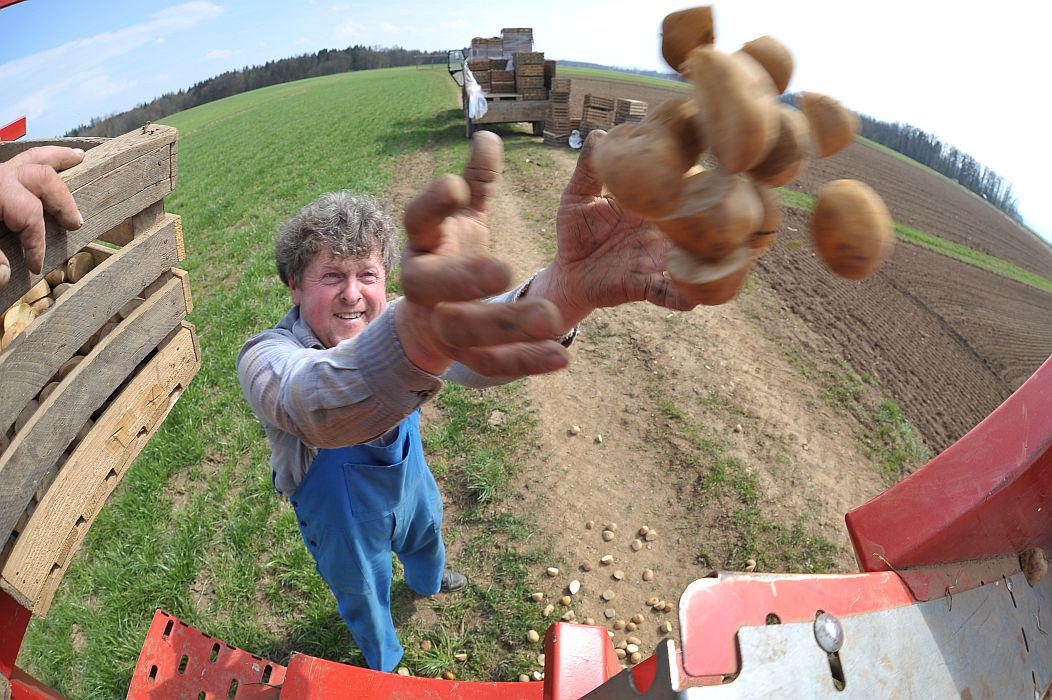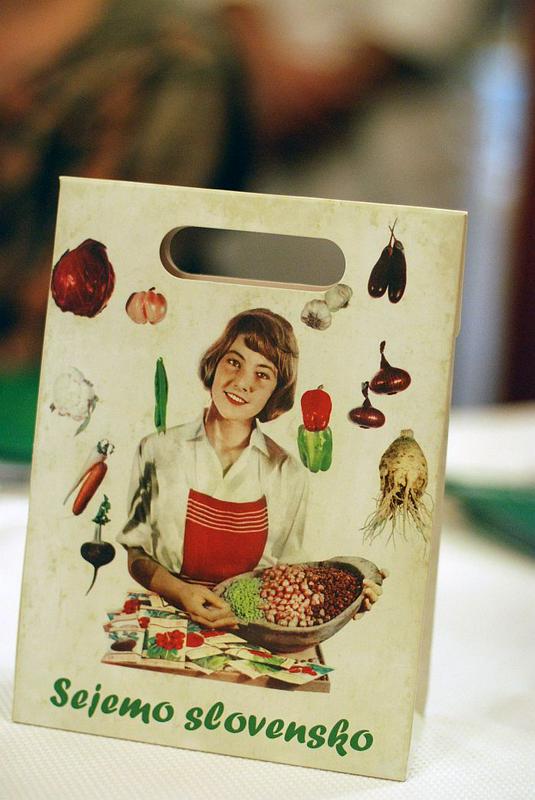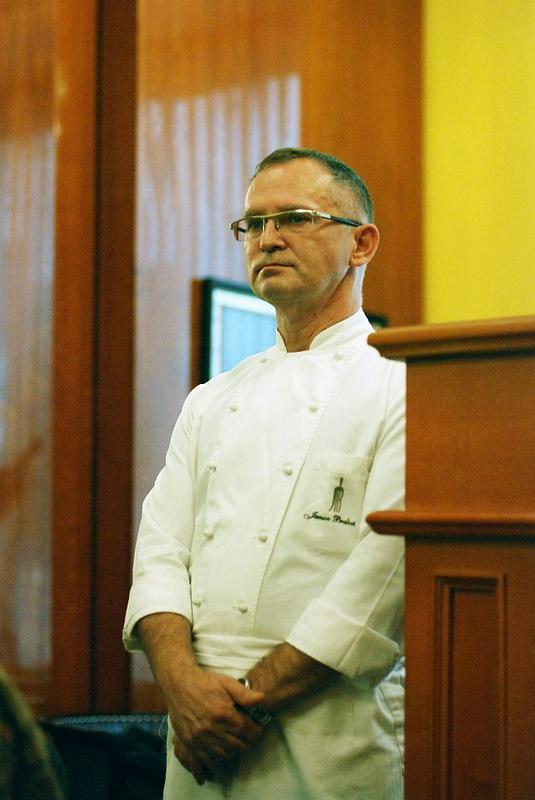


"It is so very Slovenian to have your own backyard garden," says the ethnologist dr. Janez Bogataj, who in the company of the top Slovenian chef Janez Bratovž, and Semenarna Ljubljana on Wednesday treated guests in JB with a Vegetable breakfast, with the purpose of drawing attention to the autochthon Slovenian varieties as a part of the cultural heritage of Slovenia.
"Relying upon the old varieties means adapting to the four seasons of the year. These varieties are adapted to our taste, and are indispensable in the Slovenian home cooking. The native autochthon varieties are invaluable natural heritage of our fields and gardens. Their characteristics make them resistant to climate conditions, and give them resistance in extreme conditions, resulting in satisfactory and above all very tasty produce," says dr. Bogataj.
Crisp head cabbage lettuce (Iceberg), carrot yellow from Ljubljana, garlic from Ptuj, onion from Bela krajina, val tomato, pumpkin golica, Slovenian common beans češnjevec, rampion žličar … The wealth of Slovenian varieties– Semenarna Ljubljana cultivates 23, along with eight domesticated - is exceptional, and according to Darko Vernik from Semenarna these autochthon varieties excel by their quality and taste, and are adapted to our cuisine, which is a big advantage compared to the hybrids arriving from abroad. Semenarna works on every variety it gets (they are inviting the readers as well to bring their seeds in case they have them, and they might even get to name them, if not yet in Semenarna collection!), refining it for years, and only then start selling it. "Our aim is not large yield, but good quality," he says.
National treasure
Autochthon food is a treasure each country should protect and preserve. Once the variety is gone, there is no way of getting it back. The old, traditional and autochthon vegetable varieties during the period of their development acclimatised to our climate, and adapted to our living conditions, during this process obtained a characteristic taste and developed their resistance to illness and pests, explains Vernik, Head of the Selection Testing Centre in Ptuj (SPC Ptuj), where they take care of preservation and selection of vegetable varieties.
SPC Ptuj has the samples of seeds of old varieties, the only such collection in Slovenia. The seeds have been propagated by small garden owners for years, sowed, and then the most interesting, i.e. marketable and healthy varieties have been chosen.
Culinary component
Since Semenarna's expertise does not extend to cuisine, Bratovž enters the story. This year he grew his first crop on his field near Kamnik, and thus proved himself as an ideal candidate for testing the old varieties. Bratovž at first grew vegetables on his field, and then during the entire season tested the structures and tastes in his own kitchen. Thus he discovered that the climbing bean 'jabelski pisanec' gets a pleasant green colour when cooked, found out which tomatoes are more suitable for salad, and which for baking, which onion results in the best marmalade, a perfect addition to dishes with venison, how indispensable really are yellow carrots which in the past housewives used only for soups and for fodder for animals, how can certain varieties of beans have such wonderful chestnut taste, which paprika is best baked, but inedible if baked for too long, which garlic has such a mild, almost floral flavour which makes it the most suitable for consuming it raw…
Bratovž added a culinary component to the Semenarna's project Let's taste home vegetable varieties (supported also by the Ministry of Agriculture and the Environment). The result was presented on Wednesday at The Vegetable Breakfast. But, he claims that to be only the beginning. The coming season he will plant more! Perhaps we should follow his example and stop relying on produce in supermarkets marked 'eco' and 'Slovenian'. Vernik gave the example of the 'Slovenian garlic', lately extremely well sold. "The growth of Slovenian garlic needs a lot of time, and it is simply not possible that the entire quantity presently for sale grew in Slovenia. Well, that is something the inspectorate should look into."

































































